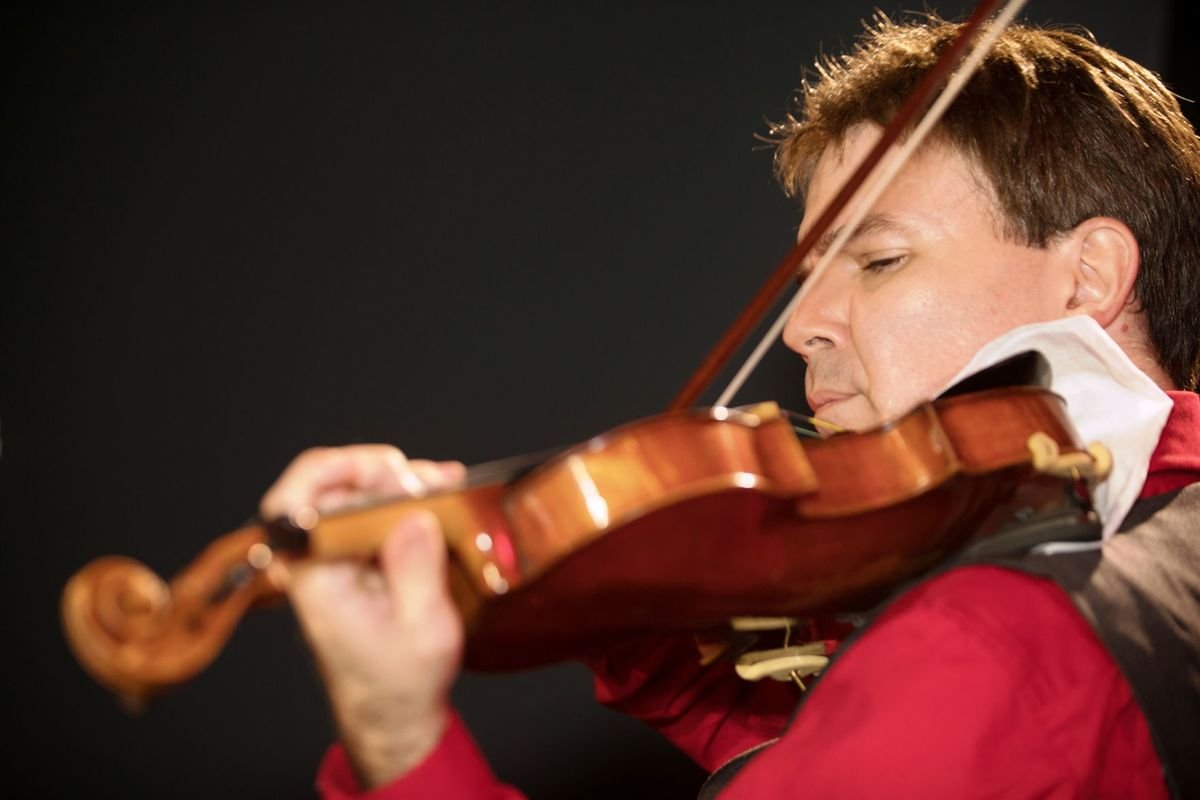
Media Archives
pictures, videos, reviews
<<Back to List

"Strings Fever" coming to Arlington
By Keith Loria / Special to the Fairfax County Times |

Artistic Director Leonid Sushansky leads the National Chamber Ensemble.
PHOTO BY JEFFREY MALET|
National Chamber Ensemble
Unitarian Universalist Church of Arlington 7:30 p.m., Saturday, March 24 Tickets: $36; $18 for students For more information, visit nationalchamberensemble.org |
For more than a decade, the National Chamber Ensemble (NCE)'s internationally-acclaimed musicians have been playing intimate concerts; they play classical to contemporary compositions. On March 24, the ensemble will hold a concert entitled "Strings Fever" at the Unitarian Universalist Church of Arlington, playing noted works by Johannes Brahms and Felix Mendelssohn. Selections on the night consist of Brahms' String Sextet No. 2 in G Major and Mendelssohn's Octet in E-Flat Major, Op. 20. "The program has two of the finest and most beautiful chamber works for strings," said violinist Leonid Sushansky, who serves as artistic director of the NCE. "These two works are both masterpieces of the chamber repertoire and require deep musicianship and brilliant virtuosity." Sushansky calls Brahms' lush melodic piece, "one of the most beloved works in the chamber music repertoire." Its rich, melancholy structure represents Brahms' letting go of a love with a lady he was engaged to. "It represents a relationship that didn't work out," he said. "There are a lot of interesting folk elements and dance elements; in fact, the last movement is very upbeat. This, I think, characterizes a possible last dance with her." As a contrast to that work, he said Mendelssohn's Octet in E-Flat Major was chosen because it's one of the most exciting and best works for strings. Each of the eight instruments in the song has an individual solo. "It's a virtuosic work. It was written when Mendelssohn was only 16 years old. He wrote it as a birthday gift for his violin teacher," Sushansky said. "It's significant in his life because it's one of two great works that I consider to be examples of his genius during his teenage years." Sushansky has been performing Mendelssohn's music since he was 12 years old and has always felt a strong connection to it. In fact, last year, when the violinist made his debut in Germany at the Leipzig Gewandhaus, he played Mendelssohn's Violin Concerto. When putting the concert together, Sushansky likens himself to Willy Wonka, saying he's a person who must create a program with a different flavor, feel and different artists each time and provide something magical for the audience. "I wanted to marry these two pieces for this concert because it shows the maturity of Brahms, and the youthful energy of Mendelssohn," he said. "I put together a program almost like a chef planning a meal. You want things to heat up towards the end of the concert in terms of the energy level." Considering his pedigree—Sushansky is the son of Rimma Sushanskaya, a violinist and pupil of the legendary David Oistrakh—he believes he was always destined to be a violinist. He started studying seriously at the age of 12 and performed Mendelssohn's Violin Concerto on a Marvin Hamlisch TV special soon after. He received a scholarship to the Juilliard School at the age of 13, spent seven years learning from Dorothy DeLay and was coached by violinist Isaac Stern. At 15, Sushansky made his debut with the New York Philharmonic after being invited by Zubin Mehta to perform the Tchaikovsky Violin Concerto. The National Chamber Ensemble has been performing at the Roslyn Spectrum Theatre for 10 years, but this season, found itself without a permanent home and has been playing at both the Unitarian Universalist Church of Arlington and the Gunston Arts Center. "The church has great acoustics and Gunston is a nice theater," Sushansky said. "It might be a little confusing for our audience, who were used to going to one location, but things have been working out really well. I do wish that they would add a professional concert hall in Arlington." For those who have never seen a performance before, he noted that the great thing about this concert is that it's welcoming to those who are both connoisseurs and first-time concert goers. "The concert is pretty interactive, with musicians who tell funny stories and personal experiences, and things about the music," Sushansky said. "Audiences will not only get to know about the music, but also about composers and artists ... It's a warm and fun environment." After the concert, a reception will be held for audience members and musicians, allowing those in attendance to meet and ask questions. |






